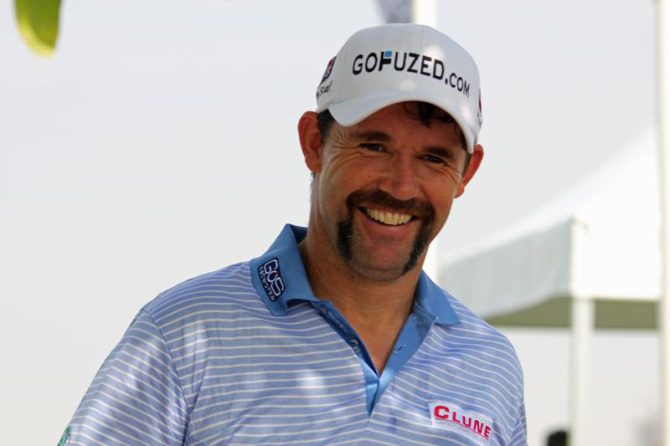James Braid, a legendary Scottish golfer and golf course architect, developed a renowned golf teaching methodology that emphasized the mastery of sound fundamentals through methodical practice in the early 20th century. Braid’s approach emphasized the importance of a strong grip, a rhythmical swing, and precise mechanics in order to achieve a consistent and accurate golf swing. His legacy as a golf instructor is based on his emphasis on practice and one-on-one attention to his students, which laid the groundwork for his reputation as a renowned golf educator. Braid’s writings and teachings have influenced many golfers, and they continue to guide those looking to improve their techniques.
– Techniques and Mechanics of the Grip
Techniques and Mechanics of the Grip
At the core of Braid’s golf lesson methodology lay the mastery of a solid grip, which he believed served as the foundation for a controlled and effective swing. Braid meticulously defined the mechanics of an optimal grip, emphasizing its importance in fostering consistency and minimizing slicing or hooking.
Position and Alignment
Braid stressed the significance of proper hand placement on the club. He advocated for an interlocking grip, where the pinkie finger of the right hand (for right-handed golfers) rests between the index and middle fingers of the left hand. This interlocking configuration ensures a firm hold on the club, preventing the hands from slipping and causing unintended shots. Braid also placed great importance on the alignment of the hands, with the left-hand thumb pointing towards the right shoulder.
Pressure and Stability
Braid believed that maintaining balanced pressure throughout the grip was crucial for controlling the clubface. He advised golfers to apply equal pressure with both hands, avoiding any excessive squeezing or gripping. Maintaining a relaxed yet secure hold allowed golfers to maintain a steady swing plane and minimize unnecessary tension. Additionally, Braid emphasized the role of the thumb in providing stability to the grip. He encouraged golfers to keep their thumbs pressed firmly against the shaft, creating a stable and consistent platform for the swing.
– Rhythmical Swing: Mastering Tempo and Timing
Rhythmical Swing: Mastering Tempo and Timing
In his golf lesson methodology, James Braid emphasized the importance of developing a rhythmical swing, characterized by a consistent tempo and timing. According to Braid, a smooth and coordinated swing was essential for accuracy and distance.
To achieve this, Braid advocated for a methodical practice routine that focused on developing muscle memory and ingrained specific movement patterns. He believed that by repeatedly executing the swing with the correct tempo and timing, golfers could internalize these elements and perform them instinctively during actual play.
Drill for developing a rhythmical swing:
- Tempo-Controlled Swings: Practice swinging at a slow and deliberate pace, focusing on maintaining a consistent rhythm throughout the backswing, downswing, and follow-through.**
- Metronome Use: Use a metronome to set a specific tempo for your swing, ensuring that you are moving through the ball at the desired pace.**
- Mirror Practice: Stand in front of a mirror and practice your swing, paying attention to the flow and rhythm of your body movements.
– Understanding the Fundamentals: Mechanics of the Swing Plane
Understanding the Fundamentals: Mechanics of the Swing Plane**
James Braid emphasized that the golf swing follows a specific plane determined by the shaft of the club, which he referred to as the “swing plane.” This plane is dictated by the angle at which the club is held at address and the arc along which it is swung. Maintaining a consistent swing plane ensures that the clubhead travels on a precise path, resulting in increased accuracy and consistency.
To establish the correct swing plane, Braid advocated for a solid address position with the club held firmly and the shaft aligned to the target line. This position sets the framework for the swing and ensures that the clubhead is properly positioned at the top of the backswing. Braid further emphasized keeping the clubhead in line with the swing plane throughout the swing, particularly during the downswing and impact. He believed that any deviation from the plane would lead to inconsistency and loss of control.
Swing Plane and Accuracy:
| Club | Swing Plane Angle | Target|
|—|—|—|
| Driver | 10-15 degrees | Maximum distance and accuracy |
| Irons | 20-30 degrees | Controlled distance and accuracy |
| Wedges | 35-50 degrees | Maximum accuracy and control for short distances |
Braid recognized the importance of matching the swing plane to the club being used. Different clubs require different swing plane angles to achieve optimal performance. For example, a driver requires a shallower swing plane to generate maximum distance, while wedges demand a steeper plane to produce a higher trajectory and increased spin. Understanding and adjusting the swing plane based on the club selection is essential for effective shot-making.
– Practice and Individualization: A Tailored Approach
Practice and Individualization: A Tailored Approach
<p>Braid believed that golf was a skill that could be perfected through systematic and consistent practice. He devised a series of drills and exercises that students could use to improve their fundamentals. He also emphasized the importance of practice in real-world conditions, so that students could learn to adjust their technique to the challenges of different courses and playing conditions.</p>
<p>Braid also recognized that every golfer is unique, and he tailored his teaching methods to suit the individual needs of each student. He took into account a student's natural abilities, swing type, and physical limitations. He then designed practice programs to help students identify and correct their specific weaknesses. Braid's individualized approach to teaching helped golfers of all levels improve their skills.</p>
<p>Braid's legacy as a golf instructor is based on his sound and systematic teaching methodology. He broke down the golf swing into its component parts, developed specific drills to improve individual skills, and tailored his teaching methods to the individual needs of his students. Braid's passion for golf and his dedication to teaching helped numerous golfers improve their skills and enjoy the game more fully.</p>
– The Legacy of Braid’s Methodology: Impact and Continuing Influence
–
The Legacy of Braid’s Methodology: Impact and Continuing Influence
James Braid’s instructional legacy continues to inspire generations of golfers. His emphasis on fundamentals, methodical practice, and personalized instruction has profoundly influenced golf instruction. Braid’s teachings have permeated through the golf teaching profession, with many contemporary coaches incorporating his principles into their own methods.
Braid’s writings, such as his influential book “Golf,” continue to be highly regarded for their detailed insights and timeless guidance. The principles outlined in his book have served as a foundation for countless golfers seeking to improve their technique. Braid’s work has not only shaped individual golfers but has also influenced the development of various golf training programs and curricula.
Braid’s legacy is further solidified through the numerous golf courses he designed. His courses, such as the iconic Gleneagles Hotel, embody the principles he preached. They are characterized by strategic design, demanding thoughtful shotmaking, and rewarding precise execution. By playing Braid’s courses, golfers can experience firsthand the challenges and rewards of his approach to the game.
In conclusion, James Braid’s golf lesson methodology provides a comprehensive and effective approach to improving one’s golf swing. Its emphasis on sound fundamentals and methodical practice has helped countless golfers enhance their skills. Braid’s legacy as a revered golf educator continues to inspire golfers seeking to refine their techniques and elevate their performance on the course. His writings and teachings remain valuable resources for players at all levels, ensuring that Braid’s influence in golf instruction will endure for generations to come.





